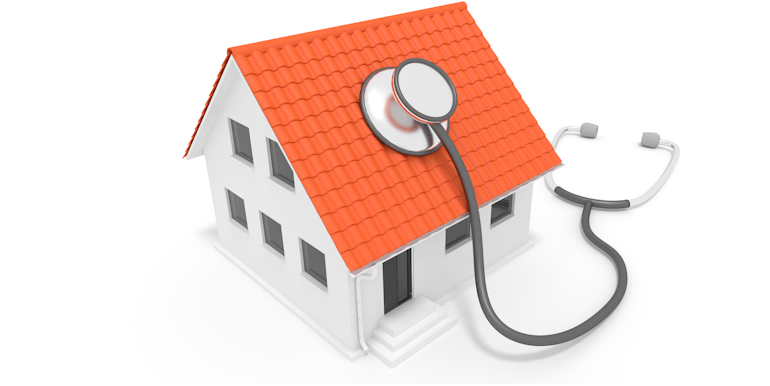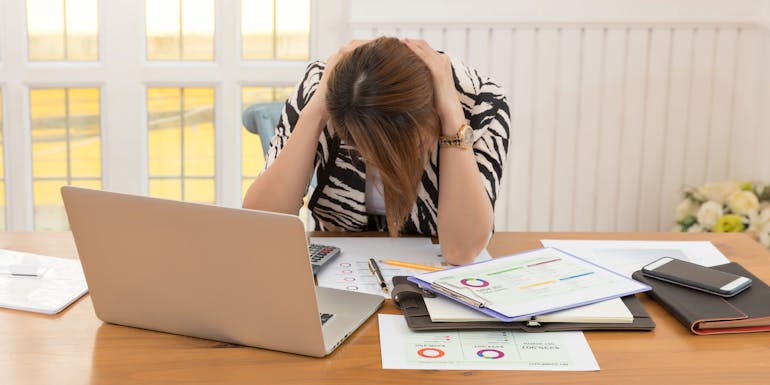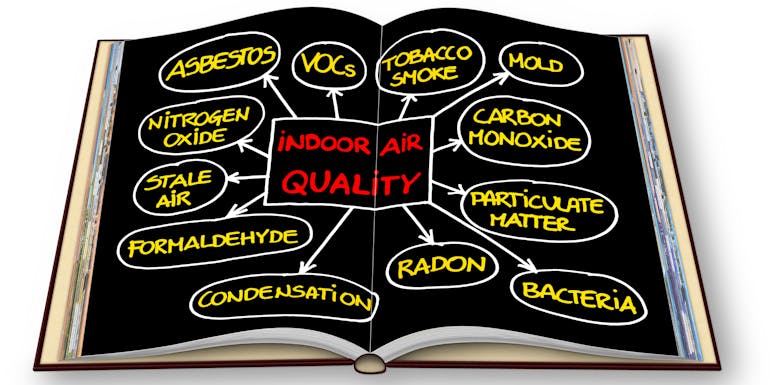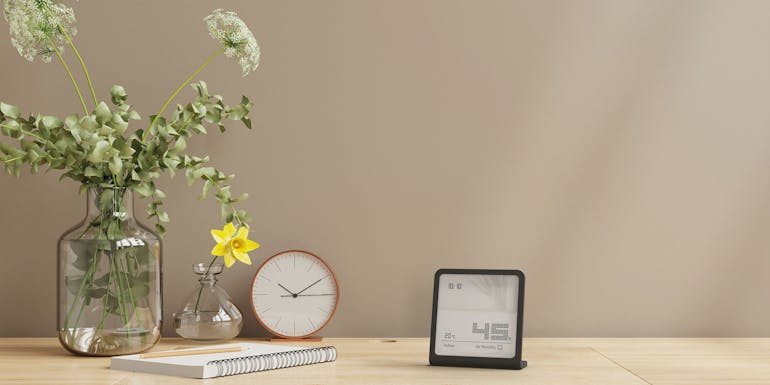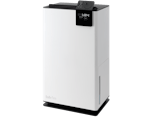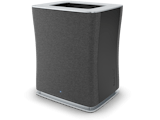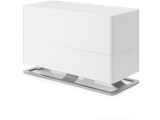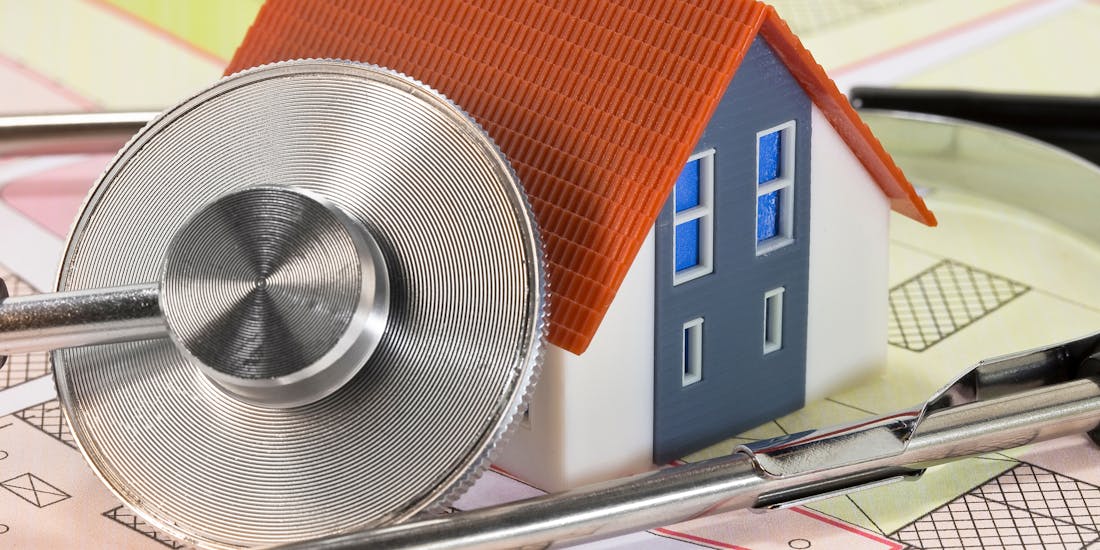
Nadine Walder, 23 August 2023
Virus protection
Sick building syndrome: the effect of indoor air quality
Nowadays, we spend a considerable proportion of our lives indoors, be it at work, at home or in public places. That is why it is crucial for these buildings to provide us with a pleasant and healthy indoor climate. One phenomenon that is the focus of concern in this context is so-called sick building syndrome (SBS). This involves a combination of different non-specific symptoms perceived by the occupants or users of a building. An important aspect associated with sick building syndrome is indoor air quality.
Read on to find out about:
- What is sick building syndrome?
- Sick building syndrome: symptoms and causes
- The effect of indoor air quality on sick building syndrome
- Preventing sick building syndrome
What is sick building syndrome?
According to the Federal Office of Public Health FOPH, sick building syndrome is a term coined in the 1970s to describe a range of health complaints associated with being in buildings. As soon as the person affected leaves the building they are in, the problems usually subside or disappear completely. A term to be distinguished from sick building syndrome but often confused with it is building-related illness. While sick building syndrome is a collective term for non-specific health complaints that occur within a building, the term building-related illness (BRI) refers to specific, diagnosable illnesses or health problems that can be directly linked to time spent in a particular building. Examples of BRI include infections and allergies.
Sick building syndrome: symptoms and causes
Unlike building-related illness, sick building syndrome is not a medical term. It is characterised by non-specific symptoms with no clear diagnosis of an illness. The symptoms are varied and include:
- respiratory problems including coughs, chest tightness and shortness of breath
- dry, itchy or irritated eyes, nose and throat
- fatigue, headaches and difficulty concentrating
- skin irritations
- general malaise
People affected often feel unwell and unhealthy without there being a clear medical cause.
The causes of sick building syndrome are complex, varied and not fully understood. Even though the exact mechanisms have not been proven, several factors play an important role in the development of sick building syndrome. These include dust, volatile organic compounds (VOCs), lighting, low-frequency noise, biological contaminants as well as insufficient cleaning and maintenance of buildings.
In Germany, the ProKlimA study was conducted from 1994 to 2000, which investigated the reasons for the occurrence of SBS. It showed, among other things, that most complaints were voiced after spending time in rooms with air conditioning. The study also concluded that personal factors and perceptions, the user-friendliness of the workplace and the job itself have an influence on the development of sick building syndrome.
Another key factor for the development and worsening of sick building syndrome is the air quality indoors.
The effect of indoor air quality on sick building syndrome
Indoor air quality is a decisive factor for people’s well-being and one that is extremely important when designing rooms, workplaces and buildings. The main parameters for ensuring good, healthy air quality indoors are air temperature, humidity and CO2 concentration. Indoor air quality is influenced by various elements which can in turn affect the emergence and exacerbation of sick building syndrome:
- Insufficient ventilation: Poor ventilation can lead to pollutants such as VOCs or other chemicals remaining in a room due to the insufficient exchange of air.
- Pollutants and allergens: Indoor spaces can harbour a wide range of pollutants and allergens such as dust mites, mould spores, animal hair and pollen. Inhaling these particles can trigger allergic reactions and respiratory problems.
- Chemical emissions: Building materials, furniture, cleaning products and other sources can release VOCs and other chemicals into the indoor air. These chemicals affect indoor air quality and can cause SBS symptoms.
- Unfavourable relative humidity: The ideal humidity indoors is between 40% and 60%. If the indoor climate is too humid, it promotes the growth of mould and bacteria which can have a negative impact on air quality and health. If the indoor air is too dry, the mucous membranes can dry out and it can cause itchy eyes, nose and throat.
Air quality also influences thermal comfort, i.e. people’s perception of satisfaction with an indoor climate. This encompasses aspects such as room temperature, humidity, air velocity, radiant heat, clothing and level of activity. The link between sick building syndrome and thermal comfort lies in the fact that poor thermal conditions indoors can increase the risk of SBS symptoms occurring. If the room temperature is too high or too low, if the level of humidity is too high or too low or if there is a strong draught, it can lead to problems. The probability of sick building syndrome symptoms increases when people spend time in an environment where there is poor thermal comfort.
Preventing sick building syndrome
Fortunately, there are ways to reduce or prevent the occurrence of sick building syndrome. Combating sick building syndrome requires a holistic approach to the improvement of indoor air quality among other things. That approach includes:
- Monitoring indoor air quality: To ensure a healthy and pleasant indoor climate, the quality of the indoor air should be monitored continuously. Humidity and temperature can be monitored using a hygrometer. Special VOC measurement devices are used to measure VOCs while the CO2 concentration is monitored by means of CO2 measurement devices.
- Sufficient ventilation: Ensuring that there is sufficient ventilation is of decisive importance. Ventilation systems and air filters should be maintained and cleaned on a regular basis in order to ensure good air quality. Where possible, intense ventilation of rooms should be carried out regularly as it is a cost-effective and uncomplicated way of improving air quality.
- Source control: Building materials, furnishings and cleaning products chosen should be ones that only release low emissions of VOCs and other harmful chemicals. Potential sources of contaminants that can cause sick building syndrome should be cleaned or removed.
- Humidity management: The humidity indoors can be influenced in the short term by carrying out regular ventilation. For a permanently positive effect, various air-conditioners can be used to ensure a healthy level of humidity. If the level of humidity is constantly too high, dehumidifiers can help. If the level of humidity is too low, humidifiers are the right choice.
- Air purification: Air purifiers filter bacteria, viruses, VOCs, bad smells, formaldehyde, ozone, dust, dust mites, smoke and tobacco, mould and pollen from the air. In doing so, they make a significant contribution towards helping to ensure healthy indoor air quality.
Ultimately, it is important to note that sick building syndrome does not have a specific cause but is often due to a combination of several factors. However, indoor air quality plays a significant role in the development of the different symptoms of sick building syndrome.
The link between sick building syndrome and indoor air quality underlines the importance of creating a healthy indoor climate. Since we humans spend so much of our lives indoors, it is crucial to prioritise air quality. By focusing on ventilation, contaminants, humidity and other factors that contribute towards creating poor indoor air quality, we can reduce the symptoms of sick building syndrome and promote the well-being of the occupants and users of different buildings.
If you have questions related to indoor room climate, please get in touch with us. Or subscribe to our newsletter to regularly get informed about current topics regarding indoor climate, experience reports or Stadler Form insights.
